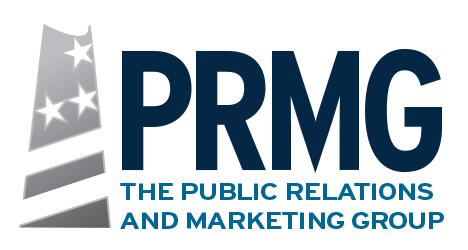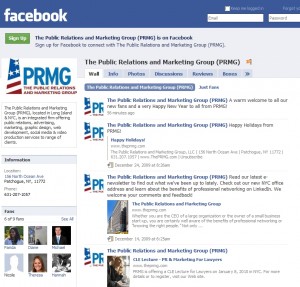Before You Start a New Business, Be Sure to Create and Fund Your Marketing Plan
Many of us remember the 1989 hit movie Field of Dreams wherein Kevin Costner plays an Iowa corn farmer, hearing voices to “build it and he will come,” builds a baseball diamond and the Chicago Black Sox come to play on the field. This is then followed by thousands of cars appearing out of nowhere to watch as the movie comes to a close. Too often, I have experienced almost the same mentality with clients who have recently started a new business.
Great ideas and good business models do not always lead to success. How often have you heard someone say, “that actually ended up costing less money than I thought it would”? Rarely ever, if at all. Starting a new business, even those that are not retail or professional, always seem to cost more money than the business owner planned. Retailers, restaurants and even professionals often spend more money than they budgeted to complete build-outs, buy equipment and pay professional fees. They are then often tapped out by the time they open the doors. Unfortunately, the hard part has just begun. Usually, it is marketing that suffers as businesses struggle to keep the doors open and now have limited means to spread the word about their creation.
For any business owner, it is imperative to include a marketing plan as part of one’s business plan and to budget funds for at least six months to a year. The following outline describes the steps I would recommend along with some practical, cost-effective suggestions.
Choosing a Business Name
There are a number of considerations here, including legal factors such as whether your name may violate someone’s trademark or whether the name is not generic so that you will be able to trademark your name. You want to choose a name that is both unique and also describes your business. One of the first considerations is whether the domain name is available. This has become increasingly important and is now the most important factor if your business is going to be primarily Web-based. Go to www.networksolutions.com or www.GoDaddy.com. Both these sites let you see the available domains and allow to purchase and manage your domain name(s). In addition to the .com extension, you will likely want to purchase .net, .us, .biz and others, including .org if yours is a non-profit organization or association.
Choosing a Location
Choosing a location is a very important factor. Choosing the ideal retail location is a little bit beyond the scope of this paper, but to simplify matters, you want to obtain the best location available that is within your budget. You want to research your demographics. Is this the type of business that can be supported by the local economy? What competition will it face? Will it be located near similar and complementary businesses? How much exposure will it have to foot and vehicular traffic? What type of signage can it have? You are going to want to take full advantage of signage opportunities. Does it make sense to lease a location rather than buy? What’s the minimum lease commitment and deposit I need to provide? For home and web-based businesses and professionals, you have many more options. I would recommend virtual office space (shared or part-time space) over renting, at first. Obtaining a professional office address and then meeting prospective clients and business associates at a virtual office is an excellent way to get started, allowing you to put your resources in other areas and work from home at the same time. It could put you in a better location to buy office space later on, rather than wasting funds on renting. If you are expanding, virtual offices also provide excellent opportunities to create the presence you need without the added expense.
Logo and Branding
Developing a logo and defining your brand is a very important step. You want to take the time to develop a logo that provides you with an eye-popping, unique visual representation of your business and the goods or services you provide. The logo will become the look of your company and will be incorporated into your website, as well as your marketing and collateral materials. Your brand should have been addressed in your business plan. Take the time to describe your business. What makes it unique? What consumer needs does it address? You can use this write-up for your company overview page of your site and for your marketing materials.
Website
Before you open your doors, before you print a business card, you need to build a website. For your site to be successful and to obtain high search engine ranking, you want to begin by asking yourself, “How am I going to develop outstanding content that is found in search engines, brings people back to my site and compels them to share my content with others?” In addition, since search engines rank pages that are updated more frequently higher, when choosing pages for your site, ask yourself whether this is the type of content that lends well to regular updating. You also want to consider whether to have a blog. For starters, we often suggest that a blog be incorporated into a website to help with the optimization of the site. The blog can be spun off later. Your site should include social media links, an easy way to e-mail you, a contact page with a contact form and downloadable content. For professionals, this could be a guidebook or brochure that provides valuable information to visitors; information that they will be willing to give up their e-mail address for. The contact form and download forms can then be linked to e-mail programs such as Constant Contact or StreamSend. This way, you can set up automatic e-mail triggers and then send e-newsletters and other content to visitors. For retailers or restaurants, this can be as easy as having a downloadable coupon. As your site’s content comes together, you also want to optimize the on-page content and engage in off-page optimization techniques to improve your site’s backlinks and authority with search engines. As you get ready to host and launch your site, be sure to set up Google Analytics to measure your traffic and take a benchmark of your keyword ranking using software such as Web CEO.
If You Build It, They Won’t Necessarily Come: Part 2
If You Build It, They Won’t Necessarily Come: Part 3





